The Colosseum is probably the most impressive building of the Roman Empire. Originally known as the Flavian Amphitheater, it was the largest building of the era.
The monumental structure has fallen into ruin, but even today it is an imposing and beautiful sight that captivates the imagination.
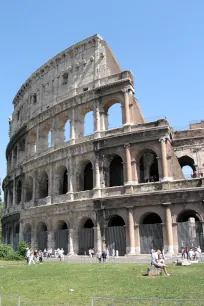
The Flavian Amphitheater
Emperor Vespasian, founder of the Flavian Dynasty, started construction of the Colosseum in 72 AD. It was completed in 80 AD, the year after Vespasian’s death.
The massive amphitheater was built on the site of an artificial lake, part of Nero’s huge park in the center of Rome, which also included the Golden House (Domus Aurea) and the nearby Colossus statue. This giant statue of Nero gave the building its current name.
The Building
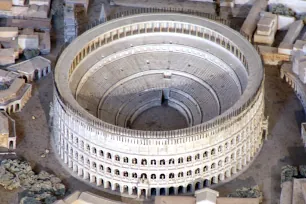
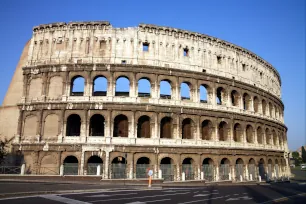
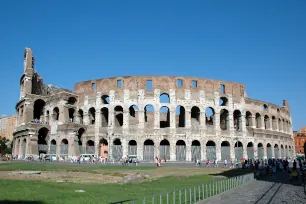
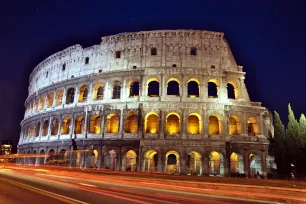
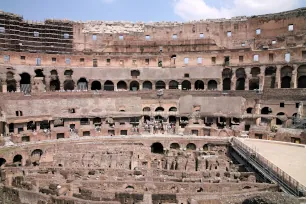
The elliptical building is immense, measuring 188 meters by 156 meters and reaching a height of more than 48 meters (159 feet). The magnificent structure was clad in marble, and 160 larger-than-life statues graced the arches on the upper floors.
The Colosseum could accommodate some 55,000 spectators, who entered the building through no less than 80 entrances. Above the ground are four stories, the upper story contained seating for lower classes and women.
The lowest story was preserved for prominent citizens. Below the ground were rooms with mechanical devices and cages containing wild animals. The cages could be hoisted, enabling the animals to appear in the middle of the arena.
Velarium
The Colosseum was covered with an enormous awning known as the velarium. This protected the spectators from the sun. It was attached to large poles on top of the Colosseum and anchored to the ground by large ropes. A team of about one thousand men was used to install the awning.
Bread and circuses
Emperors used the Colosseum to entertain the public with free games. Those games were a symbol of prestige and power, and they were a way for an emperor to increase his popularity. Games were held for a whole day or even several days in a row. They usually started with comical acts and displays of exotic animals and ended with fights to the death between animals and gladiators or between gladiators. These fighters were usually slaves, prisoners of war or condemned criminals. Sometimes free Romans and even emperors took part in the action.
Inauguration
Hundred-day games were held by Titus, Vespasian’s successor, to mark the inauguration of the building in 80 AD. In the process, some nine thousand wild animals were slaughtered.
The Ruins
The southern side of the Colosseum was felled by an earthquake in 847. Parts of the building – including the marble cladding – were later used for the construction of other landmark buildings, such as the St. Peter’s Basilica and Palazzo Farnese.
